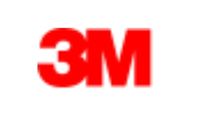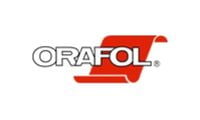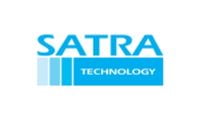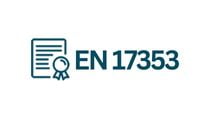Introduction
Welcome to our comprehensive guide on EN ISO 20471, the High-Visibility Clothing Standard. In today’s industries where workers are exposed to hazardous situations near traffic, cranes, or other motorized vehicles, ensuring their safety is of utmost importance. High-visibility clothing plays a crucial role in reducing the risk of accidents by making the wearer stand out from the background and increasing their visibility from all angles.
In this article, we will delve into the key requirements of EN ISO 20471 High-Visibility Clothing and explore the three classes that garments can be categorized into. We will also discuss the differences between EN ISO 20471 and its predecessor, EN471, to provide a better understanding of the standard’s evolution. Additionally, we will provide insights on how to maintain compliance with EN ISO 20471 to ensure the continued effectiveness of high-visibility clothing.
It is important to note that EN ISO 20471 replaced EN471 in 2013, and any new high-visibility workwear garments made after 2013 must be CE marked and designed to comply with the new standard. If you haven’t updated your workers’ high-visibility clothing recently, now is the time to order replacements to ensure compliance and the safety of your team.
Throughout this article, we will provide valuable information and guidance to help you navigate the world of high-visibility clothing and make informed decisions when selecting the appropriate garments for your workforce. We will emphasize the significance of considering the fluorescent material, reflective strips, and contrast material in high-visibility clothing, as well as the specific requirements outlined in EN ISO 20471.
By the end of this guide, you will have a comprehensive understanding of EN ISO 20471 and be equipped with the knowledge to ensure the safety and compliance of your workers’ high-visibility clothing. So, let’s dive in and explore the world of high-visibility clothing and the standards that govern it.
Key Requirements of EN ISO 20471 High-Visibility Clothing
EN ISO 20471 sets out the key requirements for high-visibility clothing, ensuring the safety and visibility of workers in high-risk environments. The standard covers various aspects of the design and performance of the clothing, including the fluorescent material, reflective strips, and contrast material.
Fluorescent Material
The fluorescent material used in high-visibility clothing plays a crucial role in enhancing visibility during daylight hours. It should also increase visibility at night, providing clear visibility from all angles. The standard specifies the requirements for the base fabric color and its performance. The fluorescent material must meet strict criteria for colorfastness, reflection, luminance, tear resistance, and strength.
Reflective Strips
Reflective strips are essential for enhancing visibility during darker hours of the day and at night. These strips require a light source to create retro-reflection, making the wearer visible to others. The standard mandates that high-visibility clothing should have reflective strips around the legs and sleeves. The most common type of reflective strip is the “glass beads reflective,” which needs regular maintenance to ensure its effectiveness. It is important to note that any branding or logos on the clothing should not cover or obscure the reflective strips.
Contrast Material
The contrast material in high-visibility clothing serves as a darker-colored fabric that is less sensitive to dirt compared to the fluorescent material and reflective strips. It helps maintain the functionality of the clothing by preventing dirt buildup in areas prone to staining. The contrast material is typically used in sleeve ends, across the abdomen, and on the ankle and knee sections of various garments. It is important to consider the placement of branding on the contrast material to ensure visibility is not compromised.
Minimum Areas of Reflective Material
EN ISO 20471 specifies the minimum areas of reflective material required for high-visibility clothing. These requirements may restrict the ability to adjust garments, such as shortening trousers, as it could reduce the area of fluorescent material. It is important to ensure that hi-vis trousers are not tucked into safety boots, as this may lead to non-compliance with the standard. Any clothing that obscures or covers the fluorescent material, such as non-hi-vis jackets worn over hi-vis vests, should also be avoided to maintain compliance.
Colors and Bleeding
The standard approves three colors for high-visibility clothing: fluorescent yellow, orange, and red. These colors have specific requirements for their performance and reflectivity. Additionally, there are strict requirements regarding “bleeding,” which refers to color residues within the material that can stain sensitive parts of the hi-vis garments. EN ISO 20471 stipulates the tolerated level of bleeding to ensure the fluorescence remains effective.
Logo Placement and Maintenance
While branded or personalized high-visibility clothing can promote a company’s identity, it is essential to consider the placement of logos. Areas of background or retro-reflective material covered by branding will be excluded from the calculation of the required minimum area. Reflective logo transfers are recommended to maintain visibility and comply with hi-vis safety standards. Moreover, proper maintenance is crucial for the longevity and performance of high-visibility clothing. Professional cleaning and regular washing ensure that the clothing remains effective and visible.
By adhering to the key requirements outlined in EN ISO 20471, employers can ensure the safety and visibility of their workers in high-risk environments. It is important to select appropriate high-visibility clothing that meets the specific needs and risk assessments of the workplace. Regular maintenance and replacement of garments are also crucial to maintain compliance and ensure optimal performance.
The Three Classes of EN ISO 20471
When it comes to high-visibility clothing, EN ISO 20471 provides a comprehensive standard that ensures the safety and visibility of workers in hazardous situations. This standard categorizes high-visibility garments into three classes, each indicating the level of protection and visibility they provide.
Class 1: This class is suitable for situations with a low risk of accidents and offers extra visibility within the company. Class 1 garments are designed to be visible at a maximum traffic speed of 30 km/hour. They require a minimum of 0.14 m² of fluorescent surface and 0.10 m² of reflective surface. While Class 1 provides the minimal level of visibility, it still plays a crucial role in enhancing safety in low-risk environments.
Class 2: Class 2 workwear provides good visibility in twilight conditions and is suitable for working on public roads. These garments are visible at a maximum traffic speed of 60 km/hour. Class 2 requires a minimum of 0.5 m² of fluorescent surface and 0.13 m² of reflective surface. With increased fluorescent and reflective material, Class 2 garments offer enhanced visibility and protection for workers in higher-risk environments.
Class 3: Class 3 high-visibility garments are recommended for working in the dark and are visible at traffic speeds of more than 60 km/hour. These garments provide the highest level of visibility prescribed by the standard. Class 3 requires a minimum of 0.8 m² of fluorescent surface and 0.2 m² of reflective surface. It is important to note that regardless of the area of materials used, a Class 3 garment must cover the torso and have either sleeves with retroreflective bands or full-length trouser legs with retroreflective bands, if not both.
The classification of high-visibility clothing into these three classes allows employers and workers to determine the appropriate level of protection based on the specific risk factors and working conditions. By following the guidelines outlined in EN ISO 20471, organizations can ensure that their workers are equipped with the right level of visibility to minimize the risk of accidents and promote safety.
It is worth mentioning that the surface area of fluorescent and retroreflective material plays a crucial role in determining the class of a garment. The table below provides an overview of the minimum surface area requirements for each class:
| Class | Fluorescent (m²) | Retroreflective (m²) |
|——-|—————–|———————-|
| 1 | ≥ 0.14 | ≥ 0.10 |
| 2 | ≥ 0.50 | ≥ 0.13 |
| 3 | ≥ 0.80 | ≥ 0.20 |
By adhering to these requirements and selecting the appropriate class of high-visibility clothing, organizations can ensure the safety and visibility of their workers, regardless of the level of risk or working conditions. EN ISO 20471 provides a standardized approach to high-visibility clothing, giving employers and workers the confidence that they are using garments that meet the necessary safety and visibility standards.
EN ISO 20471 vs. EN471: What’s the Difference?
When it comes to high-visibility clothing standards, there has been a shift from the EN471 standard to the newer EN ISO 20471. While both standards focus on ensuring the visibility and safety of workers in hazardous conditions, there are some key differences between the two.
One of the main differences is the classification system. EN471 classified high-visibility garments based on the type of garment, while EN ISO 20471 classifies them based on the body parts they cover. This change allows for a more accurate assessment of the level of protection provided by the garment.
Under EN471, there were only two classes of high-visibility clothing. However, EN ISO 20471 introduces a third class, providing a higher level of visibility and protection. Class 3 garments are recommended for workers who are exposed to high-risk situations, such as those working in the dark or at high speeds.
Another important difference is the requirements for the amount of fluorescent and retroreflective material used in the garments. EN471 had specific requirements for the amount of material, while EN ISO 20471 specifies the minimum surface area of fluorescent and retroreflective material for each class of garment. This ensures that the garments provide sufficient visibility and meet the necessary safety standards.
EN ISO 20471 also includes additional requirements for the placement and design of the reflective strips on the garments. For example, if a sleeve obscures part of a reflective band on the torso, a band must be added to the sleeves. This ensures that the reflective strips are positioned in a way that maximizes visibility and safety.
Furthermore, EN ISO 20471 includes updated requirements for the performance of the materials used in high-visibility clothing. While some physical properties like tensile strength and tear strength have been reduced, the standard now requires a minimum grade 4 color fastness. This ensures that the garments maintain their visibility and effectiveness over time.
It is important for employers and workers to understand the differences between EN ISO 20471 and EN471 to ensure compliance with the current standard. By using high-visibility clothing that meets the requirements of EN ISO 20471, employers can provide their workers with the necessary level of visibility and protection in hazardous conditions.
Maintaining Compliance with EN ISO 20471
Ensuring compliance with the EN ISO 20471 high-visibility clothing standard is crucial to guaranteeing the safety of workers in hazardous environments. While the standard outlines the requirements for high-visibility clothing, it does not cover the maintenance and care of the garments after they have been worn. However, it is essential to check and maintain hi-vis workwear to ensure its performance is not compromised over time.
One important aspect of maintaining compliance is understanding the lifespan of hi-vis garments. Most hi-vis products have a maximum life of 25 washes, unless stated otherwise on the label. Over-cleaning can lead to a loss of compliance, as it increases the likelihood of accidents. On the other hand, not washing the garments regularly enough can also impact their performance, as stains and dirt can reduce visibility. To strike the right balance, it is recommended to have at least two hi-vis garments for each part of the body and rotate their use. This way, the life of the garments can be prolonged, and they can be washed less frequently.
It is also important to consider the placement of logos or branding on hi-vis workwear. Adding logos to hi-vis garments should be done with care, as areas of background or retro-reflective material covered by branding will be excluded from the calculation of the required minimum area. Reflective logo transfers or placing branding on the contrast material can help maintain visibility and ensure compliance with hi-vis safety standards.
Regular inspection of hi-vis garments is another key aspect of maintaining compliance. Check for any signs of wear, tear, or fading of the fluorescent and reflective materials. Replace garments that are no longer capable of performing to their certified class. By keeping the team safe and ensuring compliance, businesses can avoid potential accidents and legal issues.
It is important to involve workers in the process of selecting their high-visibility clothing. Their preferences and comfort should be taken into account, as this can boost employee morale and engagement. By allowing workers to have a say in the type of hi-vis garments they wear, they are more likely to feel motivated to wear the provided PPE.
In conclusion, maintaining compliance with the EN ISO 20471 high-visibility clothing standard is crucial for the safety of workers in hazardous environments. Regular inspection, proper care, and understanding the lifespan of hi-vis garments are essential. Involving workers in the selection process can also improve engagement and ensure that the provided PPE is worn consistently. By following these guidelines, businesses can maintain compliance and prioritize the safety of their workforce.






